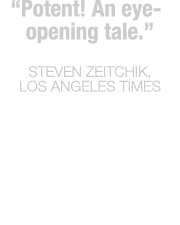
Q: How did Marshall Curry and Matt VanDyke meet?
(director, Marshall Curry): I hadn't heard about Matt's story, but one day I got an email from him, introducing himself and saying he had seen my films (Street Fight, Racing Dreams, If a Tree Falls: A Story of the Earth Liberation Front). He told me he had returned from Libya where he'd been fighting with the rebels and thought his story would make a good documentary. He and Lauren came to New York and met with my wife (who is a producer on the film) and me, and told us about his adventures and experiences. My wife and I thought it was an amazing tale with provocative questions about war, adventure, idealism, "manhood", and the way we use cameras to craft our images.
I asked him to send me some of his footage, and when I watched it I was amazed by his access to a war and world that most outsiders had never seen. So a few months later I did the first interview which makes up the spine of the film.
Q: How much did you shoot? How long did it take to edit?
MC: Over two long days, I shot twenty-something hours of interviews with Matt. Later we also did a few hours of pick-up interviews that were audio only. Matt had shot over a hundred hours of footage during his travels through Northern Africa and the Middle East. It took me and my team around a year to shape that footage and the interviews into a movie.
Q: Why did you film the interviews in his apartment and in a messy kitchen rather than in a more traditional interview setting?
MC: I knew from the beginning that I didn't want to do a typical bio-pic where I travelled around doing fancy interviews with Matt's old contacts and so on. Instead I wanted the film to feel informal and intimate, like when you meet someone in a bar or on a long bus ride, and they just spill out their tale. I wanted to strip away anything that felt like slick, glossy production and give the audience the feeling that they had just stumbled on this guy at his desk or just stumbled on his girlfriend in the kitchen.
(In reality the scene is a bit more controlled than it appears. It seems like Matt is just sitting in front of a sunlit window, but since the sun would have changed so much over our long interviews, the windows are actually blacked out and lit with artificial lights in the rafters.)
I also decided from the beginning that I wanted to structure the whole film around a single voice in a single interview. I loved the way that The Kid Stays in the Picture and The Fog of War had done that, and thought it would invite the audience to listen and then interpret for themselves, rather than have the film interpret for them.
Q: Why did you end the film the way you did -- with an unanswered question?
MC: The first time I met Matt I thought he was a fascinating character who raised all sorts of questions about war and manhood and cameras. Most of those questions, of course, are unanswerable, and I didn't want to pretend that there were tidy solutions. I hoped that ending the film with a question like that would communicate to the audience that it didn't matter how Matt felt or how the director felt. What mattered was how they felt.
I wanted the audience to know that the film left these questions unresolved on purpose and that they were now invited to leave the theater -- or turn off the TV -- and hash them out with each other. After the film's premiere at Tribeca, I went across the street to have dinner and overheard two separate tables where people were shouting at each other about questions the film had raised, which was music to a documentarian's ears.
Q: [Spoiler alert] Did Matt get his camera back with footage after he was captured?
MC: No -- Matt's captors took his camera, and he never got it back. Fortunately, however, just a few days before he was captured, he had backed up his footage on a hard drive and stashed it in Benghazi. That's how we have all of the footage leading up to his capture. When he was released, he bought a new camera, so that's how we have all of the footage afterward.
There is no footage of Matt in prison, though, so I decided to use animation to illustrate that period. After the war, Matt had found his old prison cell and shot photos and footage of it, so we knew exactly what it looked like. The film’s animator, Joe Posner (who had worked previously with me on If a Tree Falls), used that footage to build a 3D animation of the cell. Matt said it was creepy the first time he saw the film, because the animation was so accurate and well-done, even down to the graffiti on the walls. All of the elements inside of the 3D animated environment -- the hands and feet and Matt's hallucinations -- were done with painstaking hand-painted cell animation. The sound design for this section was done at Skywalker Sound.
Q: Matt VanDyke is listed as a producer on the film. What exactly does that mean?
MC: I though it made sense to recognize the producing work that had gone into shooting the footage during his travels, since that made up so much of the final film. However, I had complete creative control and independence in directing and editing the film, and I raised all of the money to make the film from independent sources (PBS/POV/ITVS, BBC, Cinereach, Tribeca Film Institute, Influence Film Foundation, NY State Council on the Arts, etc.)
Q: What has Matt been doing since returning home from Libya?
MC: After coming home, Matt re-connected with his family. He then decided to go to Syria to film the war there and made a short film called Not Anymore: A Story of Revolution, which has received awards from film festivals around the world. In 2015 he started an organization called the Sons of Liberty International to train Christians in Iraq who are fighting ISIS.
Q: Are Matt and Lauren still together?
MC: No, they split up in 2014.


